 We are thrilled to share a post from Beth Kanter, one of the most innovative and engaging trainers in the nonprofit universe. Beth and her colleague Aliza Sherman have written a wonderful new book about avoiding burnout.
We are thrilled to share a post from Beth Kanter, one of the most innovative and engaging trainers in the nonprofit universe. Beth and her colleague Aliza Sherman have written a wonderful new book about avoiding burnout.
Because she’s Beth, she doesn’t just lecture– she trains people in creative, interactive ways. What follows is a hands-on description of a training Beth facilitated based on the ideas outlined in her book.
As a trainer in the nonprofit sector for past 25 years, my book writing naturally leads to new curriculum for the development of nonprofit professionals. I was thrilled to be able to pilot a new workshop based on my book, The Happy Healthy Nonprofit: Impact Without Burnout. This mini-workshop was for individual change makers working solo or with small or midsize nonprofits.
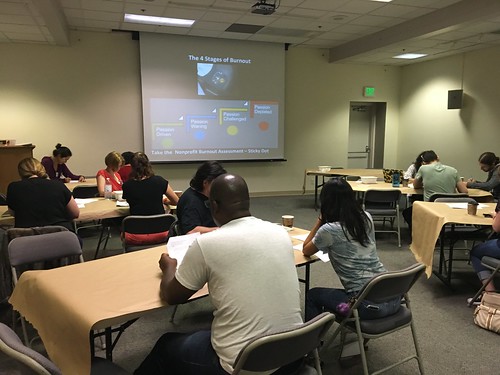
In the book, we discuss the many reasons for burnout in the nonprofit sector, but more importantly how to identify the symptoms — because burnout can be very sneaky.
We came up with a passion scale — from Passion Driven, Passion Waning, Passion Challenged, and Passion Depleted. The assessment helps educate people about the symptoms before it becomes too late.
Next, we did a series of small group exercises for participants to identify their stress triggers and reactions to stress.
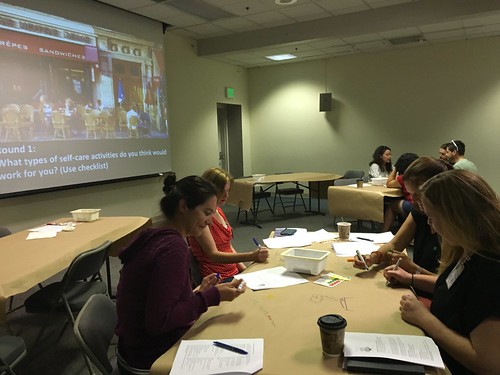
Then I had participants review an inventory of ideas around self-care practices. Self-care has to be customized to the individual – people have to design their own adventure or it won’t work.
We set up a “self-care cafe” where small groups of participants discussed self-care ideas and drew them on butcher paper. A few interesting themes came up during this exercise, as describe below.
Prioritizing, Mini-Breaks, and Asking for Support
Many activists get into the mode where they feel they have to do it all, or that everything on their to-do list is important. Changing this attitude is about learning how to prioritize tasks and understanding your personal limits. Not every task is a 10 on the 1-to-10 scale.
Another idea that bubbled up was the concept of mini-breaks during the work day to replenish energy.
And, of course, asking for and receiving help from family and friends.
Don’t Isolate Yourself
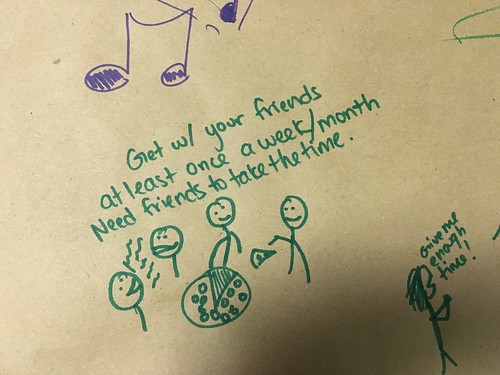
Sometimes activists dedicate so much of themselves to a cause that they become isolated from family, friends, and peers who give them energy.
Several participants reflected on how it is easy to fall into that trap. They look to schedule more time with people that give them inspiration and energy.
Being Intentional About Your To-Do List
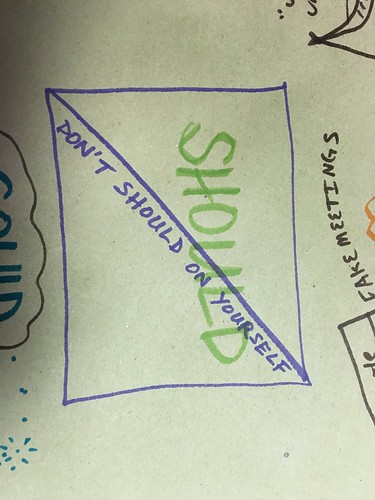
I don’t think I could have explained this idea better than the graphic, “Don’t Should on Yourself.”
If we believe we need to complete everything on our to-do list, sometimes we create more stress for ourselves.
Solving this is about being able to say no. It’s also about not feeling guilty when we don’t complete a task.
This One Was A Joke, But Still …
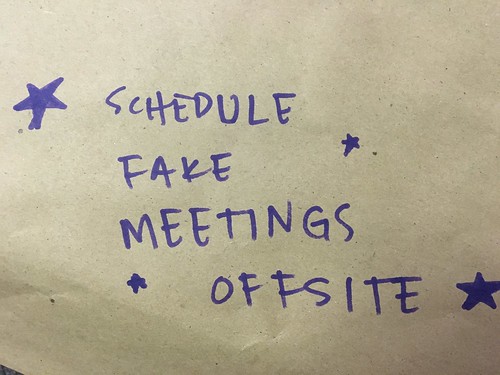
This was not a serious suggestion, but rather a joke … more or less.
The story was that an organization had hired a consultant who scheduled meetings with staff, but failed to show up. The joke at the office became, if you need downtime, schedule a meeting with the consultant.
To be clear, scheduling fake meetings off-site is lying. When I posted this on my Facebook wall, it prompted some interesting discussion points.
Jeremiah Owyang said, “This is unethical and it’s worth firing somebody for. It’s also a sign that the employee and the manager are not setting a good culture of work-life balance. A mature employee knows how to manage up. This is a Band-Aid, not addressing the main problem.”
Hildy Gottlieb pointed out, “I’d love to explore what it would take for systems to be so human that no employee would ever have to figure out ways around it just to be able to breathe.”
Create time for reflection and thinking
More and more nonprofit staff are experiencing “collaboration overload,” back to back meetings, or an overflowing email in-box. This results in little down time for reflection and thinking. With so many demands, it’s harder and harder to carve out that time without overworking.
How does your organization ensure that employees have adequate work/life balance, peak productivity, and well-being, rather than stress? What training do you provide to support healthy workplace habits?
TRAINING TIP: In the pictures of Beth’s training, notice the way she covers the tables with big sheets of butcher paper and encourages people to draw their ideas. Then she photographs and posts them. Beth learned this participatory drawing and writing approach from Juanita Brown, founder of The World Cafe facilitation model.
You can adopt the butcher paper technique to almost any exercise. It encourages creativity, highlights the collective nature of training, and gives you a real-time visual record of the work completed during the workshop.
[…] Anti-Burnout Workshop – guest post on Train Your Board […]